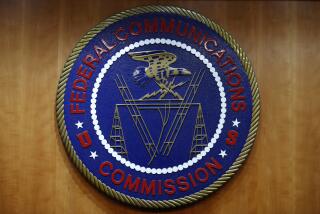Phone bill cramming scam: Are you a victim?
Phone bill cramming -- by which scammers arrange to add small charges to phone bills and then collect the money -- has been going on for years.
But it still can be highly lucrative, according to the Federal Trade Commission.
The FTC has asked a federal court to shut down a Montana-based operation that the agency alleges reaped more than $70 million by adding charges ranging from about $10 to $25 to phone bills across the nation.
According to court documents, the group named in the case went by several company names -- including American eVoice and FoneRight -- and allegedly placed bogus charges for “voice mail services, electronic fax services or other noncall-related services” on the bills of unsuspecting consumers.
The FTC said Tuesday the operation has been going on since 2008, and often worked through third-party “billing aggregators” that passed along charges to phone companies.
So, how can you tell if you are a victim of cramming?
The FTC, in an online alert called “Mystery Charges on Your Phone Bill,” says the No. 1 way that consumers can protect themselves is: “Read Your Bill.”
“Catching cramming charges means taking time to read your phone bill each month,” the agency says. This is not always easy, because phone bills can go on for several pages and be in small type.
But that’s what scammers are counting on. Checking your bill is especially important if you’ve not taken a detailed look at it for some time.
Sometimes crammers, the FTC says, put the same false charge on an individual’s bill month after month, with the money mounting up over months or even years.
Check the bill for fake but innocent sounding items such as Use Fee, Activation, Member Fee, Voice Mail and Web Hosting, to cite examples given by the FTC.
Also, are there charges for online services from a company you’ve never heard of or for calling odd-looking area codes like 001 or 500?
Pay special attention, the FTC says, to any section labeled “Miscellaneous” or “Third Party.”
If you see something suspicious, call your phone company. Even if the charge was supposedly from a company other than your service provider, the phone company should be able to tell you what the charge was for.
If you don’t get a satisfactory answer from your phone company, your statement should tell you how to dispute errors.
Finally, if you think you’ve been a victim of cramming -- even if the phone company has removed the charge -- the FTC wants you to file a formal complaint with the agency online at www.ftc.gov, or by calling (877) 382-4357.
Letting the FTC know about a cramming scam can help in the agency’s fight against perpetrators.
ALSO:
Crackdown on phone bill ‘cramming’ falls short.
For notorious L.A. scam artist, the thoughts counted.
Police say woman sought funeral funds in Sandy Hook massacre scam.







